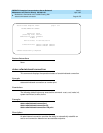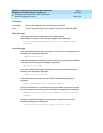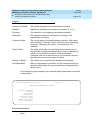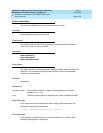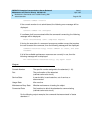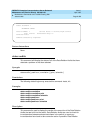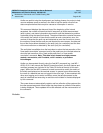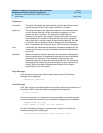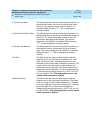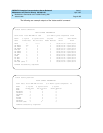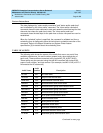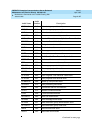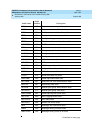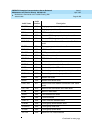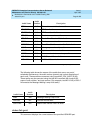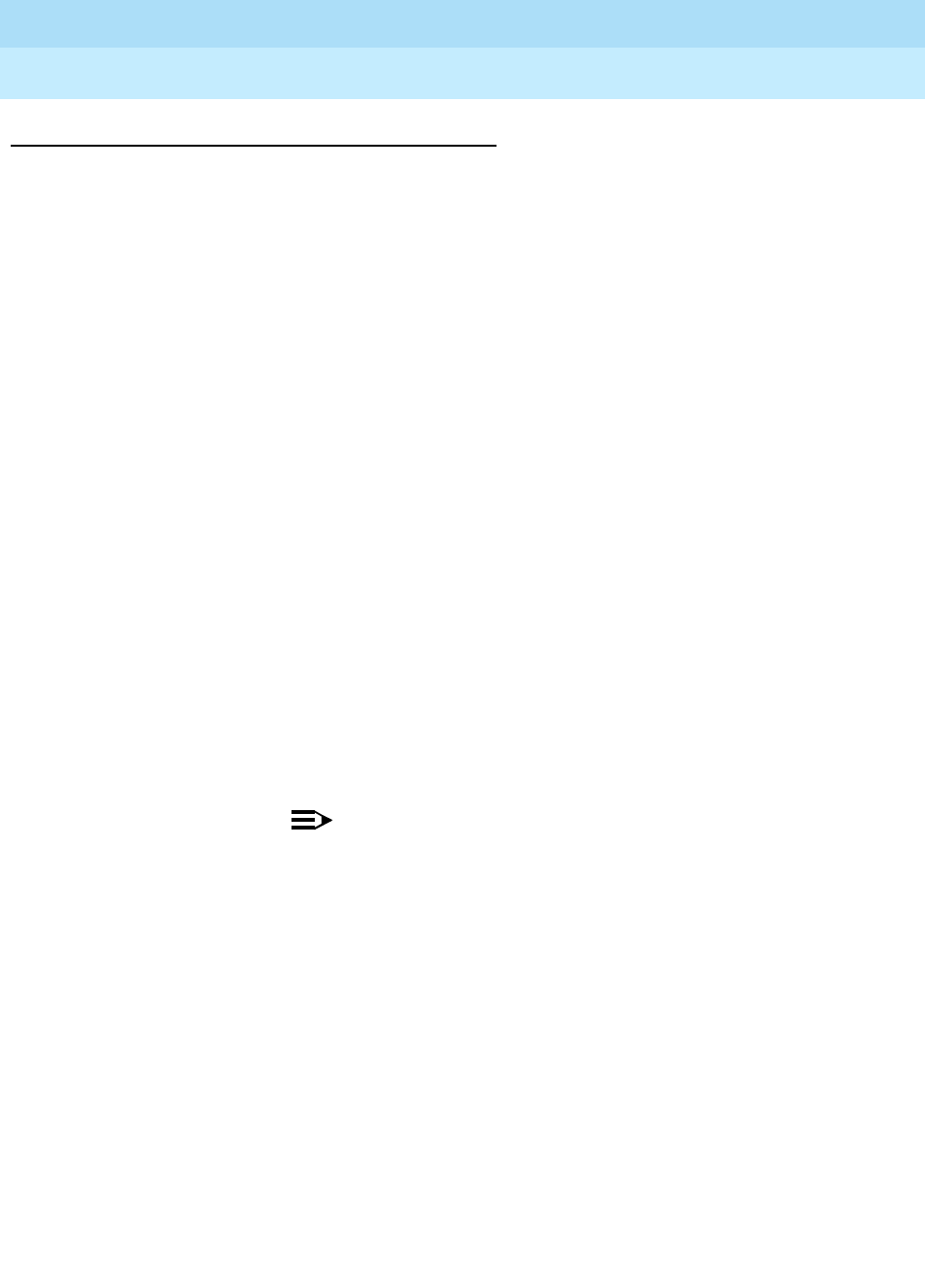
DEFINITY Enterprise Communications Server Release 5
Maintenance and Test for R5vs/si
555-230-123
Issue 1
April 1997
Maintenance Commands and Trouble-Clearing Aids
Page 8-383status audits
8
Output
The audit information will be displayed with one line of data displayed for each
audit that has detected an error or aborted. The data for audits that have not
detected any errors or aborted is not displayed since all of the numbers would be
zero anyway. The output will be sorted in descending order based on the sum of
the values in the "# Cycles Fixed Data," "# Cycles Could Not Fix Data" and "#
Cycles Audit Aborted" fields for each audit.
Start Date This field shows the date and time of the beginning of the
interval being displayed. For "cumulative" it will be the
date and time of the last reboot or of the last execution of
the "clear audits cumulative" command. For "peak-hour" it
will be the date and time of the beginning of the peak
hour since the last reboot or since the last execution of a
"clear audits cumulative" or "clear audits peak-hour"
command.
# of Audit Cycles Completed The switch executes the audits in a set order, one after
another. When all of the audits have been executed, the
switch starts over with the first one in the sequence. An
audit cycle is one execution of all audits in the sequence
of audits executed by the switch. This field shows how
many audit cycles were completed in the specified
interval. The number ranges from 0 to 999999, if it
exceeds 999999 the string "******" will be displayed to
indicate overflow.
NOTE:
Since this field shows the number of audit cycles
completed, it is possible that the individual audit
values, described below, could be larger than this
value if the switch is part way through another audit
cycle. Also, some audits are executed as part of
scheduled maintenance instead of in the normal
audit sequence, the Audit Cycles number does not
apply to these audits.
Audit Name This field shows the name of the audit that detected an
error or aborted. There are a few audits that are not run in
the normal sequence of audits. Instead, they are
executed as part of scheduled maintenance. Those
audits will be included in the reports but will be marked
with "(SCH)" following the audit name.



